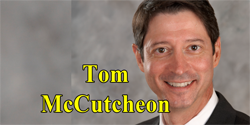The jury decides the facts and the judge decides the law. The role of the jury is to decide based on the testimony of the witnesses as given under oath in the courtroom. That means that a jury will decide disputed facts, the simplest of which may be which car ran the light. There are as many facts to be determined as there are lawsuits. Notice that this idea of testimony in front of a jury excludes “hearsay evidence”. Hearsay is a statement by someone outside of court. There are exceptions but the idea is to let both sides examine the witness in person, under oath and with the jury present.
The judge decides what law applies to the case. When a jury hears the evidence, the judge tells the jury what the law is, based on what the lawyers and judge decide what law applies. When the lawyers can’t agree, the judge decides what to tell the jury and the lawyers can, outside the presence of the jury, put on the record (for an appellate court to review) why they disagree.
In criminal cases the prosecution whether city, state or federal, must prove that the defendant is guilty “beyond a reasonable doubt”. We decided a long time ago that it’s better to allow a criminal to be found not guilty than to convict an innocent person of a crime they didn’t commit. Unfortunately, that happens anyway as we know from DNA evidence in cases where people were convicted that didn’t commit the crime. All a jury can do is decide “guilty” or “not guilty”. In Scotland, they have what I believe is a better system where a jury can return one of three verdicts, guilty, not proven or not guilty. I think that’s more accurate.
In civil cases, a jury decides the facts based on “more likely than not”. That is known as a “preponderance of the evidence”. Always remember that a judge sitting without a jury determines the facts by applying the different burdens of proof. That is to say that in a criminal case, a judge would have to find the evidence convincing “beyond a reasonable doubt” but in a civil case, a judge would only have to find the evidence “more likely than not” to rule in favor of a plaintiff.
It is the role of the jury to take differing testimony and determine whether it’s more likely than not in a civil case or in a criminal case whether the testimony is beyond a reasonable doubt.
Buckle up and drive safely.
256-764-0112
2210 Helton Drive
Florence, AL 35630



